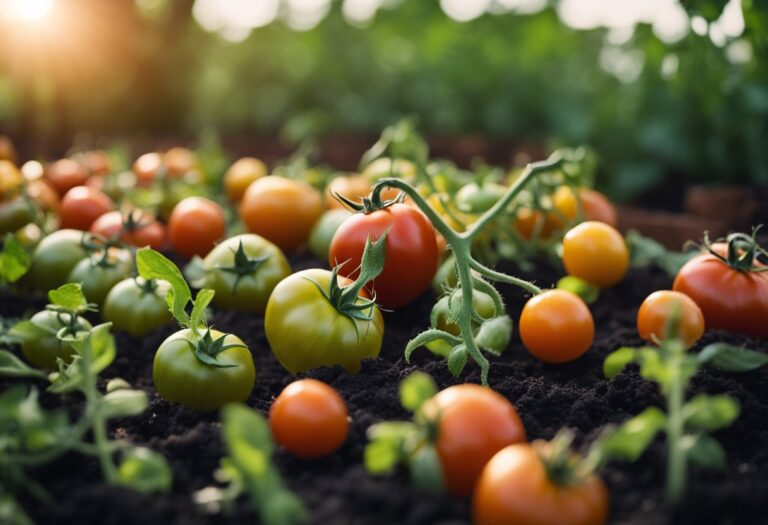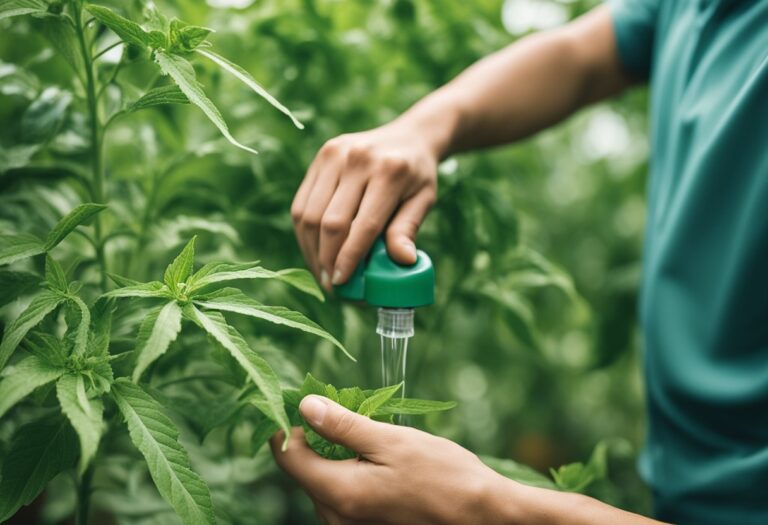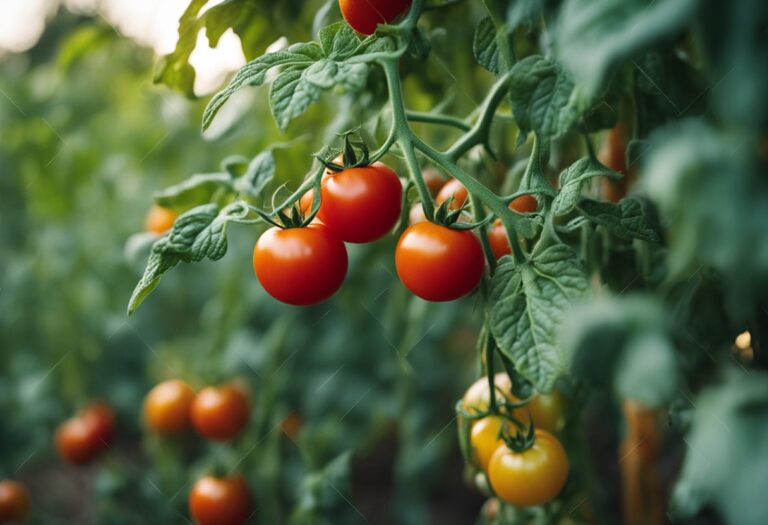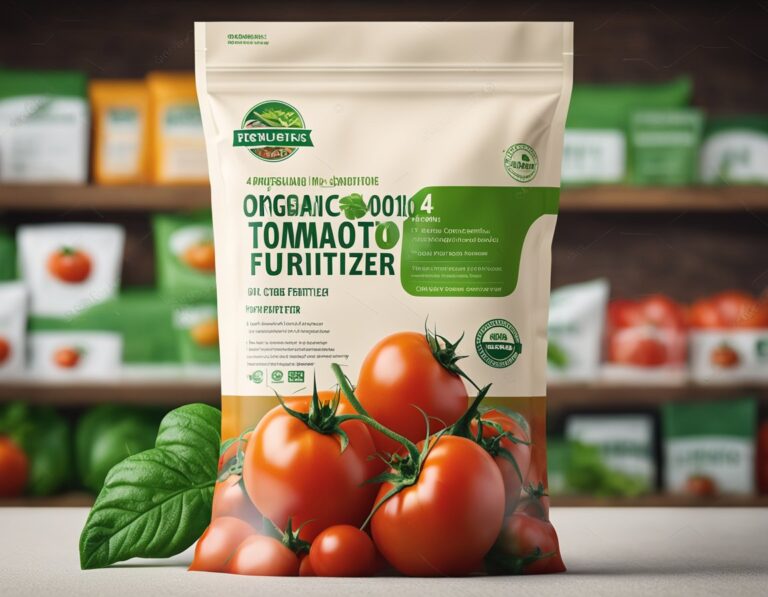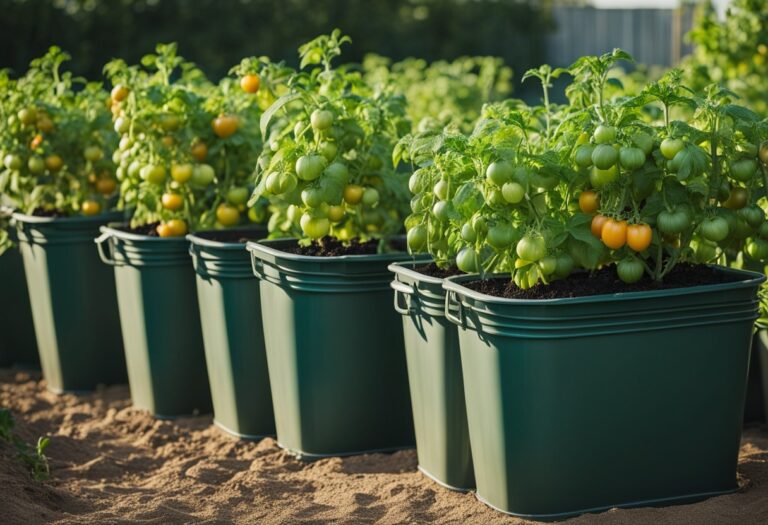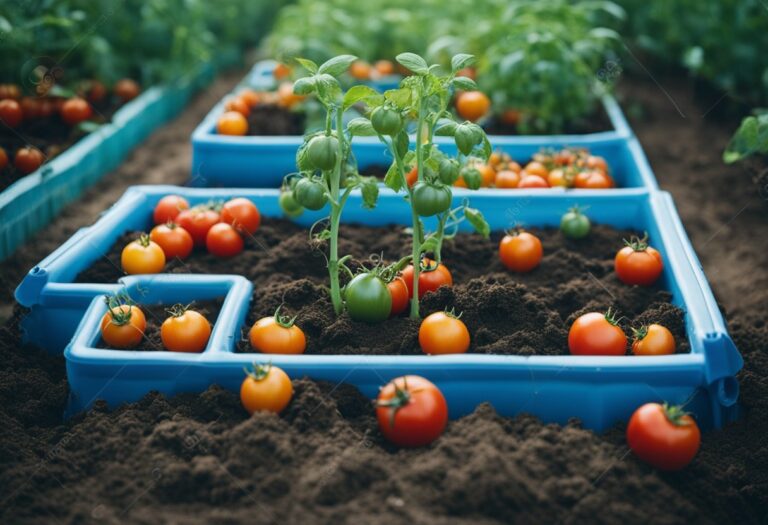5 Surprising Facts about Growing Tomatoes: A Friendly Guide
Growing tomatoes is a fun and rewarding experience, but did you know that there are some surprising facts about growing tomatoes that you may not have heard of before? Whether you’re a seasoned gardener or just starting out, these facts are sure to pique your interest and help you grow bigger, better tomatoes.
For example, did you know that tomatoes can grow roots along their stem? This means that you can plant your tomato plants deeper in the soil than you might have thought, which can help them establish a stronger root system and produce more fruit. Additionally, tomatoes require a long growing season and ample space to grow, so it’s important to plan accordingly and make sure you have enough room in your garden for your plants to thrive.
In this article, we’ll explore five surprising facts about growing tomatoes that will help you take your tomato-growing game to the next level. From optimizing soil for tomato growth to watering techniques and pest control, we’ll cover everything you need to know to grow the best tomatoes yet. So grab your gardening gloves and let’s get started!
Key Takeaways
- Growing tomatoes requires ample space and a long growing season.
- Tomatoes can grow roots along their stem, so planting them deeper can help establish a stronger root system.
- Optimizing soil, watering techniques, and pest control are all important factors in growing healthy, productive tomato plants.
The Secret Life of Tomatoes
If you’re a tomato grower, you know that there’s more to these juicy red fruits than meets the eye. Here are a few surprising facts about the secret life of tomatoes that you might not know.
Understanding Tomato Genetics
Did you know that tomatoes have over 7,000 different varieties? Each variety has unique characteristics that make it better suited for certain growing conditions.
Some varieties are better suited for hot, dry climates, while others thrive in cooler, wetter environments. Understanding the genetics of different tomato varieties can help you choose the best ones for your garden.
The Impact of Microclimates
Tomatoes are sensitive to changes in temperature, humidity, and light. Even small changes in these factors can have a big impact on the growth and development of your tomato plants. That’s why it’s important to pay attention to microclimates in your garden.
A microclimate is a small area within your garden that has slightly different growing conditions than the rest of the garden. For example, a spot near a south-facing wall might be warmer and sunnier than the rest of the garden, while a spot near a large tree might be cooler and shadier. By planting your tomatoes in the right microclimate, you can help them thrive and produce a bountiful harvest.
Remember, growing tomatoes is a fun and rewarding experience, but it requires a bit of knowledge and effort. By understanding tomato genetics and paying attention to microclimates, you can give your tomatoes the best chance of success.
Optimizing Soil for Tomato Growth
Tomatoes are a favorite among home gardeners due to their versatility and popularity as a crop. However, focusing on the soil quality in which you grow your tomato plants is vital for achieving optimal results. Here are some tips to optimize soil for tomato growth.
Soil Composition Essentials
Tomatoes thrive in soil rich in minerals and micronutrients including phosphorus, potassium, calcium, and magnesium. Sandy loam soil with good drainage and plenty of nutrients is the best soil for tomatoes.
If your soil is heavy clay soil, it is recommended to add organic matter such as compost, aged manure, or leaf mold to improve soil structure and drainage.
Balancing pH for Perfect Tomatoes
The ideal soil for tomatoes should have a pH level between 5.8 and 7.0. If the pH is too high (over 7.0), add sulfur. If your soil’s pH is too low (below 6.0), add lime. It is important to balance the pH level of your soil to ensure that your tomato plants can absorb the nutrients they need to grow strong and healthy.
In summary, growing healthy and delicious tomatoes requires optimizing the soil quality in which they grow. By ensuring that your soil has the right composition and pH level, you can help your tomato plants thrive and produce a bountiful harvest.
Watering Techniques Unveiled
Growing tomatoes can be a rewarding experience, but it requires some effort and knowledge.
One of the most important aspects of growing tomatoes is watering. In this section, we will unveil some surprising facts about watering techniques that will help you grow healthy and flavorful tomatoes.
Deep Watering Benefits
You may have heard that watering tomatoes deeply is beneficial, but do you know why? Deep watering allows the water to penetrate the soil deeply, encouraging the roots to grow deeper as well. This results in a stronger root system that can better absorb nutrients and water, leading to healthier plants and bigger, tastier tomatoes.
To deep water your tomato plants, water them slowly and deeply at the base of the plant, rather than just sprinkling the surface. It’s also important to water your plants in the morning or evening when it’s cooler, to prevent the water from evaporating too quickly.
Irrigation Systems vs. Hand Watering
When it comes to watering your tomato plants, you have two options: hand watering or using an irrigation system. Hand watering is a simple and effective way to water your plants, but it can be time-consuming, especially if you have a large garden.
On the other hand, an irrigation system can save you time and effort, and ensure that your plants receive consistent and adequate water. There are different types of irrigation systems, such as drip irrigation and soaker hoses, that can be tailored to your specific needs.
Whichever method you choose, make sure to water your plants regularly and consistently, as irregular watering can cause stress to your plants and affect their growth and fruit production.
By following these watering techniques, you can ensure that your tomato plants are healthy, strong, and produce delicious fruit.
Tomato Pests and Predators
If you’re growing tomatoes, you’re likely to encounter some pests and predators that can damage your plants. However, with a bit of knowledge and preparation, you can minimize the damage and keep your plants healthy.
Common Tomato Pests
Tomato pests are a diverse group that can cause a range of problems, from stunting growth to destroying fruit. Some common tomato pests include:
- Aphids: These small, soft-bodied insects can suck the sap from your tomato plants, causing leaves to curl and yellow. You can control them with insecticidal soap or by introducing natural predators like ladybugs.
- Hornworms: These large, green caterpillars can quickly strip a tomato plant of its leaves and fruit. You can handpick them off your plants or use a biological control like Bacillus thuringiensis (BT).
- Whiteflies: These tiny, white insects can cause leaves to yellow and become sticky with honeydew. You can control them with insecticidal soap or by introducing natural predators like parasitic wasps.
Natural Predators and Organic Controls
One of the best ways to control tomato pests is to encourage natural predators like ladybugs, lacewings, and parasitic wasps. These insects can help keep pest populations in check and reduce the need for chemical controls.
In addition to natural predators, there are several organic controls you can use to keep pests at bay. Some effective options include:
- Neem oil: This natural oil can repel a range of pests and also has antifungal properties. You can spray it on your plants to deter pests and prevent diseases.
- Diatomaceous earth: This powdery substance is made from the fossilized remains of tiny aquatic organisms and can kill soft-bodied insects like aphids and whiteflies. Simply dust it on your plants and the insects will dehydrate and die.
- Companion planting: Certain plants can help repel pests or attract beneficial insects. For example, planting marigolds or nasturtiums near your tomatoes can help deter aphids and attract ladybugs.
By taking steps to control tomato pests and predators, you can ensure a healthy and productive tomato harvest.
Harvesting and Storing Tomatoes
When it comes to harvesting tomatoes, it’s important to pick them at their peak ripeness to ensure the best flavor. Here are some tips to help you pick your tomatoes at the right time:
Picking Tomatoes at Peak Ripeness
- Look for ripe tomatoes that are fully colored and plump. Tomatoes that are still green or have a white or yellowish color are not yet ripe.
- Gently squeeze the tomato with your fingertips. If it feels firm but gives slightly, it’s likely ripe. If it’s too soft or mushy, it’s overripe.
- Smell the tomato. If it has a sweet, slightly earthy aroma, it’s likely ripe.
Once you’ve picked your tomatoes, it’s important to store them properly to extend their shelf life and prevent spoilage. Here are some long-term storage solutions:
Long-term Storage Solutions
- Store tomatoes in a cool, dry place away from direct sunlight. A pantry or basement is ideal.
- Avoid storing tomatoes in the refrigerator, as this can cause them to lose flavor and texture.
- If you have a large harvest, consider canning or freezing your tomatoes to preserve them for later use.
By following these harvesting and storage tips, you can enjoy fresh, flavorful tomatoes all season long.
Frequently Asked Questions
What are the health benefits of including tomatoes in my diet?
Tomatoes are a great source of vitamins and minerals. They are rich in vitamin C, potassium, and folate. Tomatoes also contain lycopene, which is an antioxidant that can help prevent certain types of cancer.
Additionally, tomatoes are low in calories and high in fiber, making them a great choice for weight loss.
Can you share some historical insights on how tomatoes became popular?
Tomatoes were first cultivated in Central and South America and were brought to Europe by Spanish explorers in the 16th century. At first, they were thought to be poisonous and were used only as ornamental plants.
However, over time, people began to realize that tomatoes were not only safe to eat but also delicious. Today, tomatoes are one of the most popular vegetables in the world.
What nutritional components make tomatoes a healthy choice?
Tomatoes are a great source of vitamins and minerals, including vitamin C, potassium, and folate. They are also rich in lycopene, an antioxidant that can help prevent certain types of cancer. Additionally, tomatoes are low in calories and high in fiber, making them a great choice for weight loss.
What are some unique traits of cherry tomatoes compared to larger varieties?
Cherry tomatoes are smaller than larger varieties and come in a range of colors, including red, yellow, and green. They are sweeter than larger tomatoes and have a higher sugar content. Cherry tomatoes are also great for snacking and can be eaten raw or cooked.
How has tomato sauce evolved as a culinary staple over the years?
Tomato sauce has been a culinary staple for centuries. It was first used in Italian cuisine in the 16th century and has since become a popular ingredient in many dishes around the world.
Today, tomato sauce comes in many different varieties, including marinara, bolognese, and arrabbiata.
Have tomatoes actually been part of experiments in space?
Yes, tomatoes have been part of experiments in space. In 2015, astronauts aboard the International Space Station grew and harvested tomatoes as part of an experiment to study the effects of microgravity on plant growth.
The experiment was successful, and the tomatoes were found to be just as nutritious as those grown on Earth.

